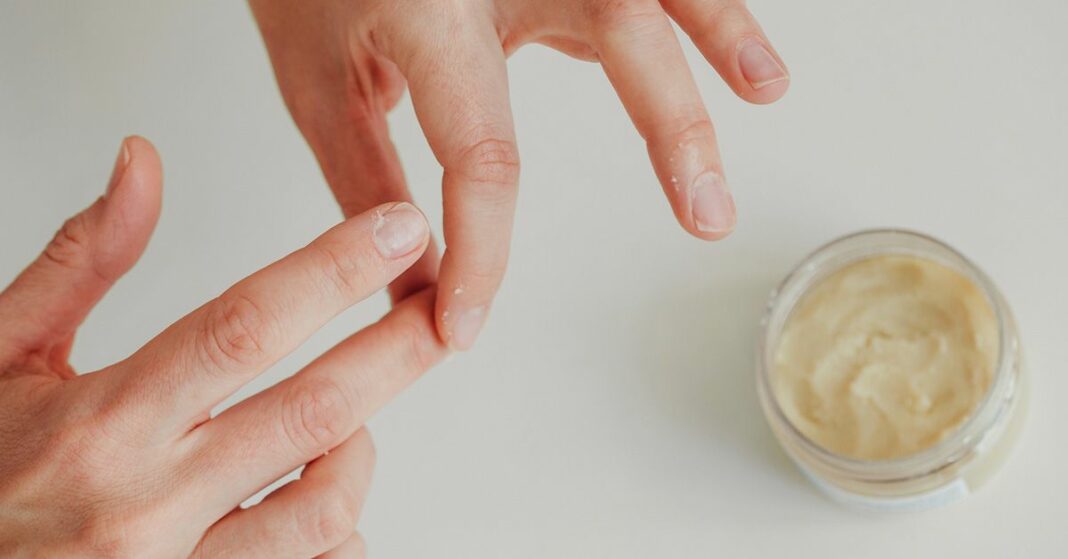If you’ve heard anything at all about alopecia areata, you prob already know that it makes hair fall out. While hair loss is the main symptom of this autoimmune disease, it’s not the only symptom. Yes, alopecia can also affect your nails.Up to 30% of people with alopecia areata have nail changes, too. Pitted, bumpy, grainy, split, brittle, and thin are just a few of the words they use to describe alopecia-affected nails. These nail problems can appear before hair loss, at the same time, or after the hair grows back in. How does alopecia affect the nails? No one knows exactly. One possible reason is that nails grow a lot like hair does. Because of those similarities, the same inflammatory immune reaction that damages hair follicles also harms nails.Nail changes might not be as noticeable as hair loss, but they can still cause problems. Some people are embarrassed by their pitted, bumpy nails. Others have trouble doing everyday activities because their nails hurt so much.If you have nail changes, it’s worth talking with your dermatologist about possible treatments.Alopecia areata can affect the fingernails, toenails, or both. Pitting is the most common nail change. About one-third of people with nail changes from alopecia have little grooves in their nails.These are some of the other possible nail changes alopecia areata can cause:grooves or dents running across the nails, called Beau’s linesseparation of the nail from the skin underneath (this doesn’t hurt, but the nail can stay separated for months or even years)red spots at the bottom of the nailridges or splitting down the length of the nailsrough nails that feel like sandpaper, with ridges that run down them small white spots on the nailsShare on PinterestRidges or splitting down the length of the nails. Copyright : © Indian Dermatology Online Journal CC BY-NC-SA 3.0Any type of alopecia can cause nail issues, but some kinds affect the nails more than others. You’re more likely to have nail symptoms with alopecia universalis, which causes a total loss of scalp and body hair, than with focal alopecia, which causes patchy hair loss.Your nails might actually offer an important clue about your condition. People with nail symptoms tend to have more severe alopecia areata that’s harder to treat.Try to keep your nails as healthy as possible. Wash and dry your fingernails and toenails every day. Keep both sets of nails well-trimmed. Long nails are more likely to tear and break than short ones. If alopecia affects your toenails, make sure your shoes are wide enough to give your toes (and toenails) room.Some people with alopecia take nutrients like vitamin B complex, vitamins D and E, and biotin to strengthen their nails.You can also get these nutrients from a well-balanced diet. If you don’t get enough from diet alone and you want to add a supplement, it’s a good idea to check with your doctor first.A few medications calm the immune system and stop it from damaging hair follicles. While there’s no specific treatment for nail changes, some of the same medicines that regrow hair also make nails look and feel better. One way to treat alopecia is with corticosteroids (or steroids, for short). These immune-suppressing medicines come as a pill, a cream, or an injection into the affected nails. Steroids can help to both regrow hair and treat nail changes.Tazarotene is a cream used to treat alopecia nail changes. It’s made from vitamin A. A group of drugs called Janus kinase (JAK) inhibitors treat autoimmune diseases by blocking a substance that causes inflammation and damage. This treatment may help with both hair loss and nail changes from alopecia areata. Just because hair loss improves doesn’t mean the nails will, too. You may have to keep treating your nails even after your hair has grown back in.It’s not always possible to prevent alopecia nail problems. One way to protect your nails from damage is by getting alopecia under control. Your dermatologist can help you find the right treatment to manage hair loss and nail problems.The time to see a doctor for alopecia is when you notice:pits, grooves, thinning, or other changes in your nailsmore hair falling out or filling your brush/comb than usualsudden patches of hair lossThese symptoms might not necessarily be alopecia. Still, they’re worth getting checked out.Alopecia areata is an autoimmune disease that causes hair loss, but it can affect your nails, too.Brittle, weak nails with pits, grooves, and red or white spots could be signs of alopecia — especially if they happen along with hair loss. Having nail problems could be a sign that your alopecia is severe or hard to treat.Nail changes can affect your self-esteem. If your nails hurt, it may be harder to use your hands. Let your doctor know about any changes to your nails or hair. Treatments are available to help with both these symptoms of alopecia areata.
